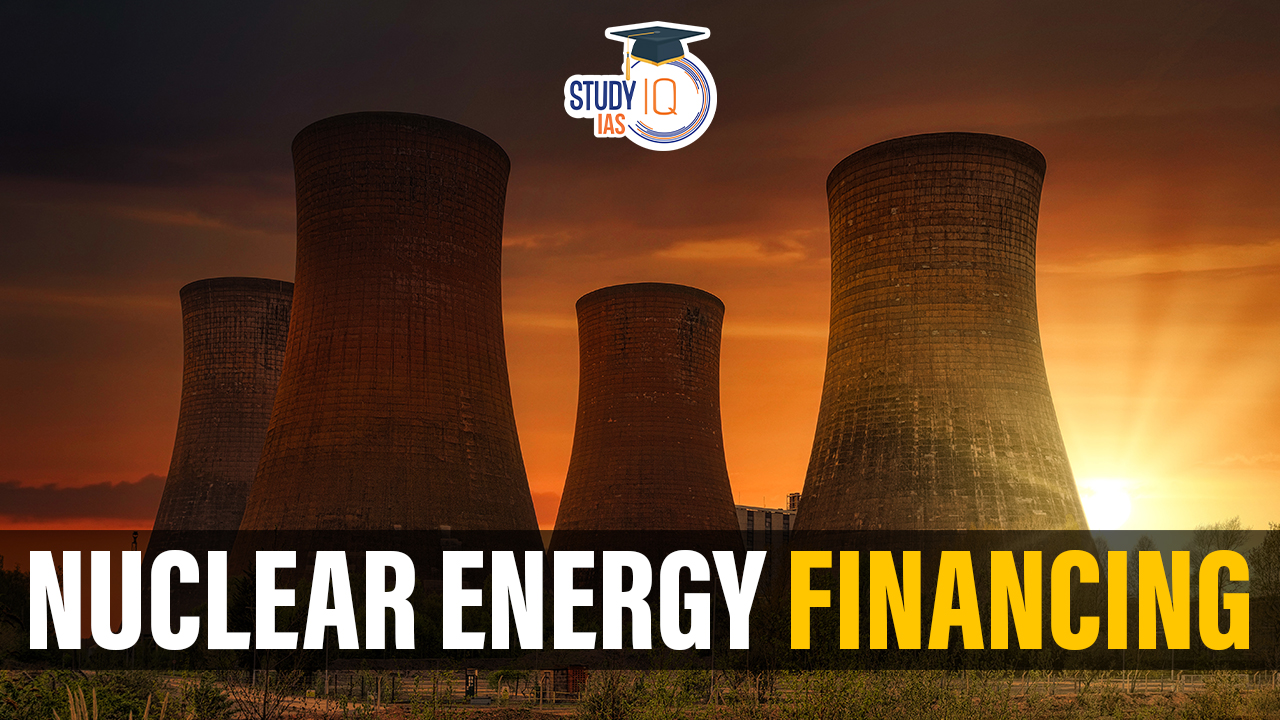Table of Contents
Context: Brussels hosted the first-ever Nuclear Energy Summit highlighting nuclear energy’s role in combating climate change.
Overview of the Nuclear Energy Summit
| Overview of the Nuclear Energy Summit | |
| Event | First-ever Nuclear Energy Summit |
| Date | March 21, 2024 |
| Location | Brussels |
| Co-chairs | Prime Minister of Belgium Alexander De Croo, IAEA Director General Rafael Mariano Grossi |
| Participants | Several world leaders |
Motivation from COP28
- Event: UN Climate Change Conference (COP28) in Dubai, December 2023.
- Outcome: Recognition of nuclear energy’s essential role in achieving climate goals.
- Global Initiative: 22 world leaders signed a declaration to triple nuclear energy capacity by 2050.
- IAEA’s Role: Collaboration with IAEA’s ‘Atoms4Netzero’ programme for decarbonization.
Advantages of Nuclear Energy
- Low carbon emissions – 4 times less than solar or wind.
- Reliable and uninterrupted energy supply – not dependent on weather.
- Low operating costs compared to other renewables.
- Smaller land footprint than other renewables.
- Longer lifespan than other renewables.
Challenges of Nuclear Energy Financing
- Limited funding from Multilateral Development Banks (MDBs) and private investors.
- The World Bank hasn’t financed a nuclear project since 1959.
- Need to reform MDB financing policies to include private capital or blended finance models.
Successful Financing Models
- Cooperative funding models used in France, South Korea, Russia, and the UK.
- Investors raise credit and take responsibility for project delivery.
- Finland’s Mankala model: multiple companies co-own energy producers, and share plant costs.
- Financial creativity and market support are needed to unlock nuclear energy’s potential.
Global Status of Nuclear Energy
- 440 nuclear reactors worldwide, generating 25% of the world’s low-carbon energy.
- 60 reactors under construction, 110 planned (mostly in Asia, led by China).
- China targets 10% of its electricity from nuclear by 2035, and 18% by 2060.
- Challenges: Project cost overruns, and bankruptcies (e.g., NuScale, Westinghouse, Areva).
India’s Nuclear Energy Scenario
- Energy Cost: India’s first commercial NPP in Pahalgarh, Tarapur offers energy at competitive rates compared to solar power.
- At Kudankulam, Tamil Nadu, a newer power plant provides electricity at costs similar to coal-fired thermal power plants.
- Low nuclear energy contribution: 1.6% of India’s renewable energy mix.
- Reasons for low adoption: stigma, safety concerns, regulation, high upfront costs, delays.
- Recent developments:
- Encouragement of private investment ($26 billion)
- Plans to triple nuclear capacity by 2031-2032
- Prime Minister Modi’s support for Prototype Fast Breeder Reactor (PFBR)


 Places in News for UPSC 2025 for Prelims...
Places in News for UPSC 2025 for Prelims...
 New Phase of Operation Chakra to Combat ...
New Phase of Operation Chakra to Combat ...
 Soyuz Aircraft: History, Design and Sign...
Soyuz Aircraft: History, Design and Sign...





















